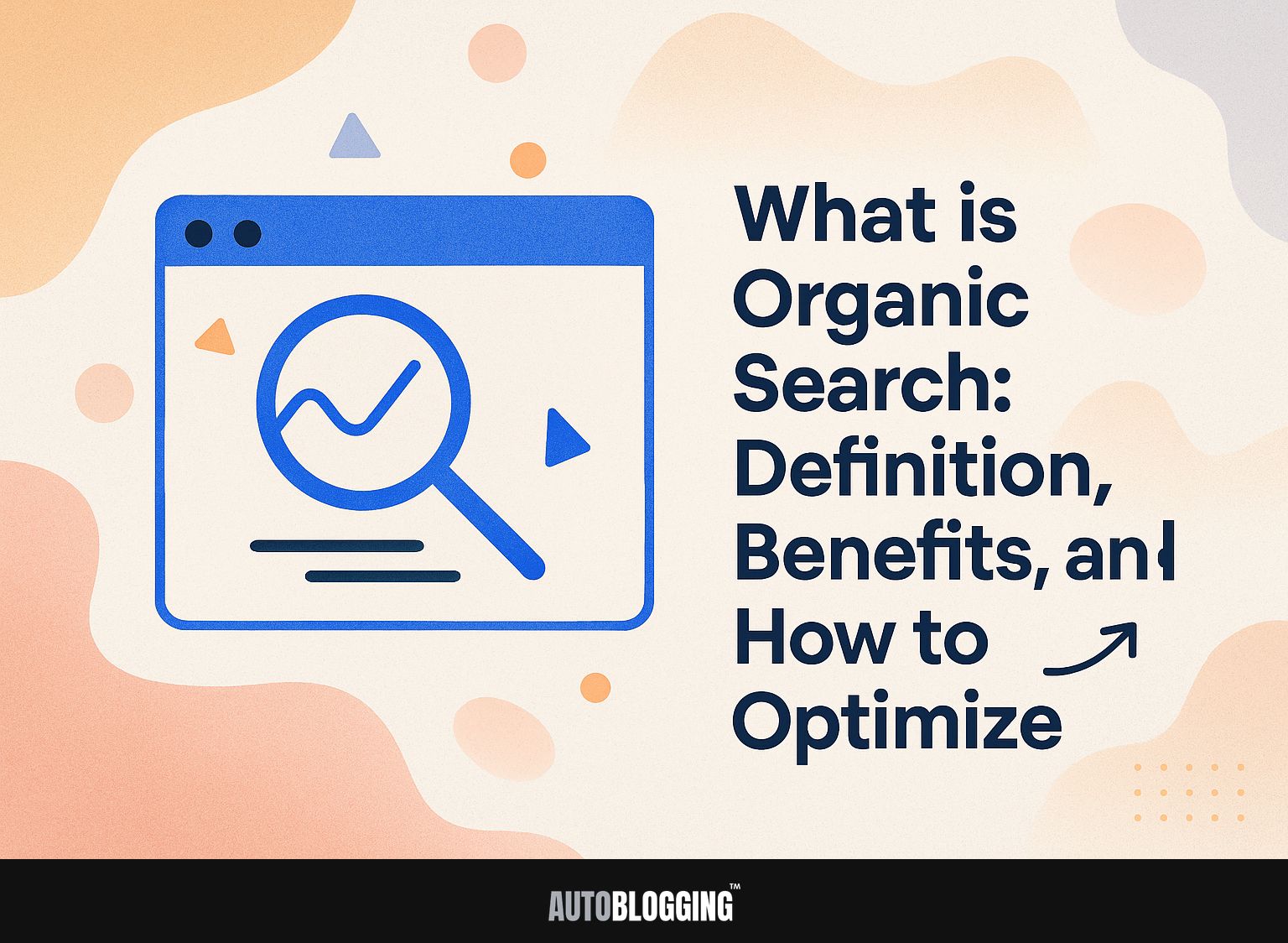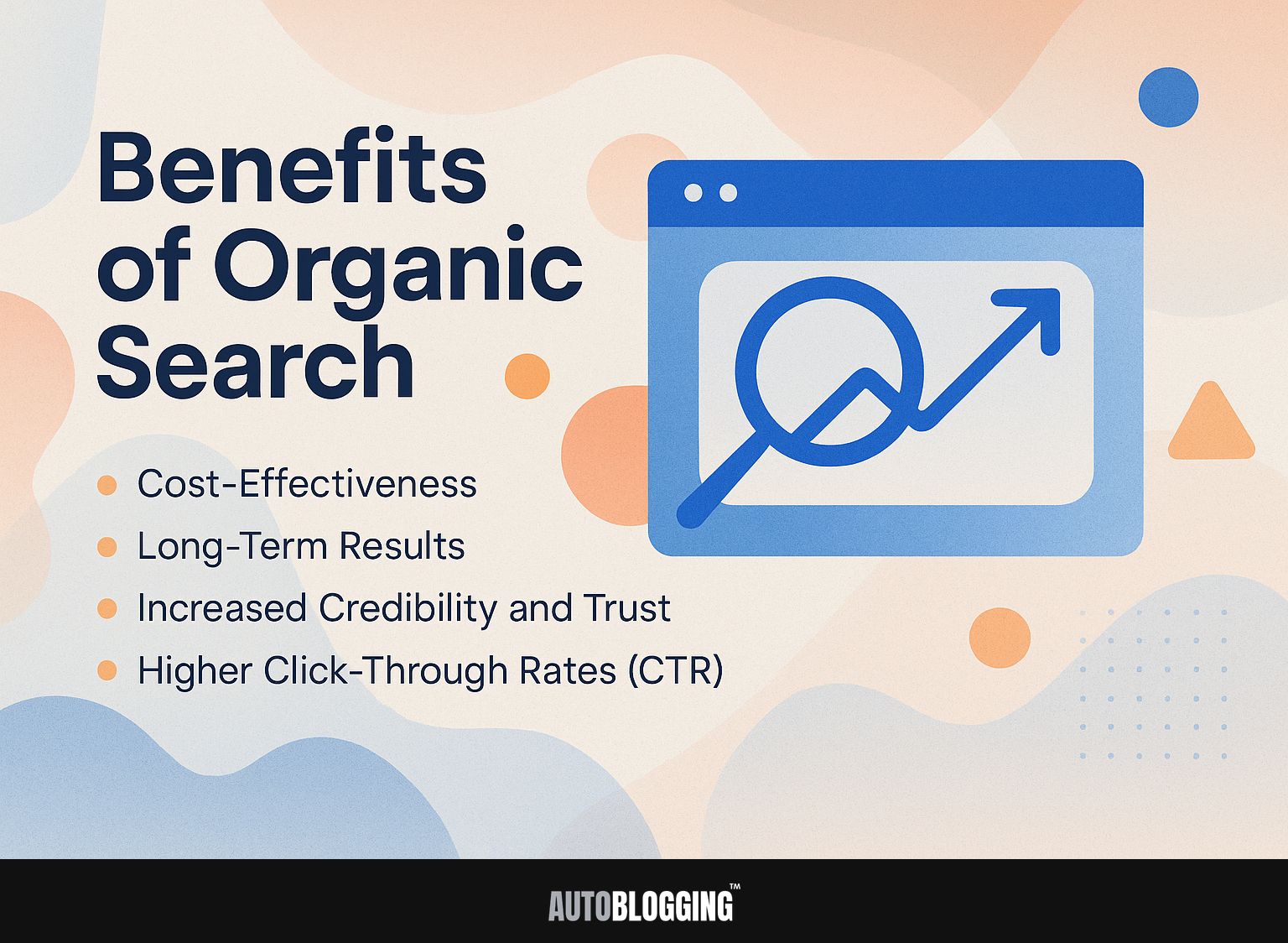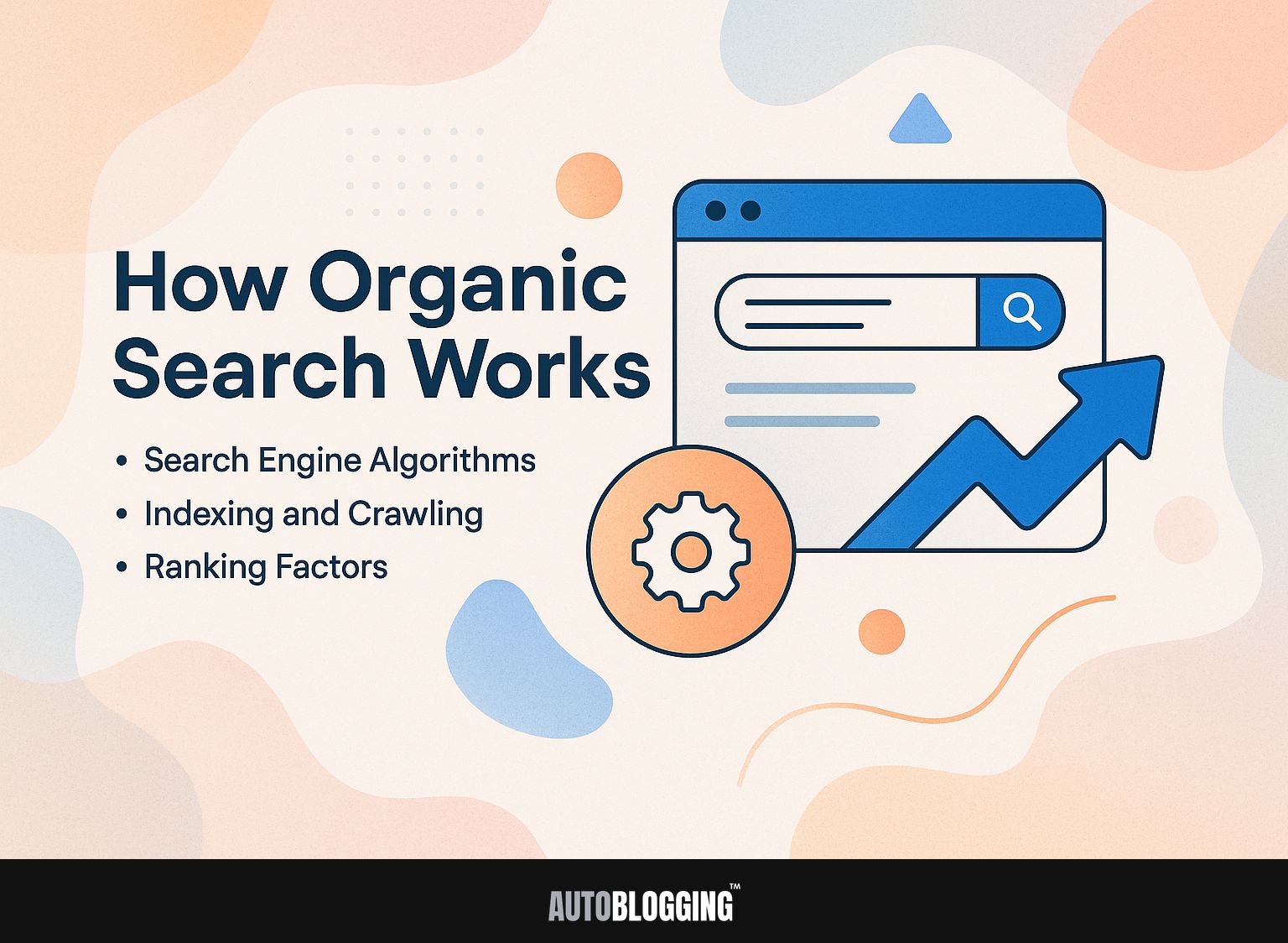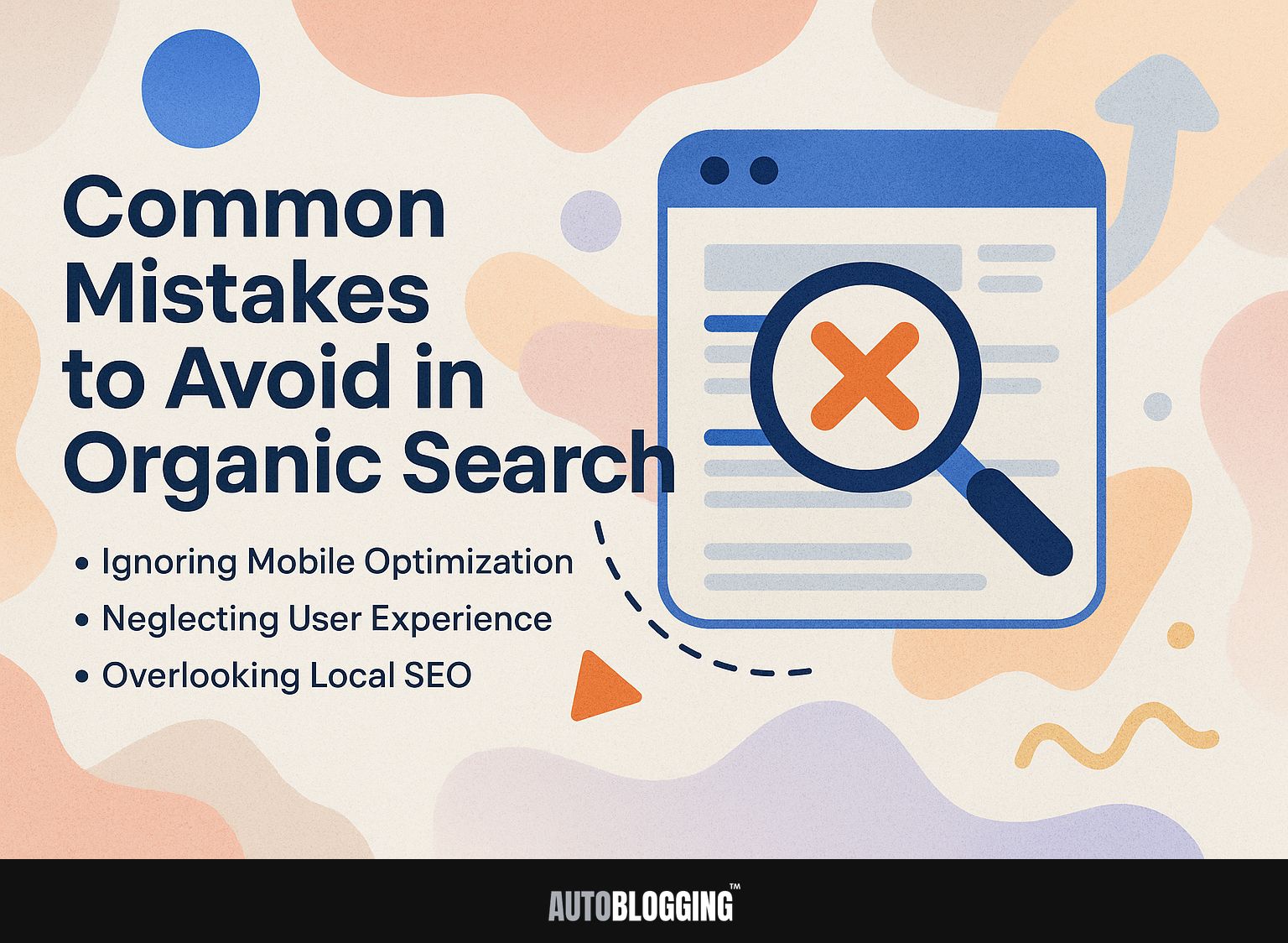
Learn how organic search can improve your online visibility. Unlike paid search options on platforms like Google, Bing, or Yahoo, organic search relies on effective SEO strategies and thorough keyword research to drive traffic naturally. In this article, we’ll discuss what organic search is, why it’s useful, and provide practical advice for improving it. Find out how to increase your visibility and connect with real people without spending too much.
Key Takeaways:
- Organic search is the process of obtaining website traffic through natural search engine results, without paid advertising. It is an essential part of digital marketing strategy for long-term success.
- Organic search offers various benefits such as cost-effectiveness, higher credibility and trust, and long-term results. It also has a higher click-through rate, making it an important source of visitors.
- To improve results in organic search, concentrate on finding effective keywords, using on-page SEO methods, providing useful and related content, ensuring technical SEO is in place, and creating backlinks. Use KPIs and tracking tools to measure success and avoid common mistakes like neglecting mobile optimization and user experience.
Contents
- Benefits of Organic Search
- How Organic Search Works
- Key Components of Organic Search Optimization
- Measuring Organic Search Success
- Common Mistakes to Avoid in Organic Search
- Frequently Asked Questions
- 1. What is Organic Search: Definition
- 2. What are the Benefits of Organic Search?
- 3. How can I Optimize for Organic Search?
- 4. Why is Organic Search Important for Businesses?
- 5. What is the Difference Between Organic Search and Paid Search?
- 6. How can I Track the Effectiveness of my Organic Search Efforts?
1. Definition of Organic Search
Organic search consists of non-paid listings on search engine results pages (SERPs), which are generated based on algorithms that assess website quality and relevance. These algorithms, created by Google, consider factors such as keyword relevance, site speed, and mobile-friendliness.
Using tools like Google PageSpeed Insights to speed up your website can greatly increase your chances of appearing in search results. Using keyword research tools like Ahrefs or SEMrush helps find useful terms to target.
Creating high-quality, engaging content that answers user queries is essential, as this aligns with Google’s emphasis on providing value to searchers, leading to improved rankings.
2. Importance of Organic Search in Digital Marketing
In digital marketing, organic search is very important because it brings about 53% of all website visitors, helping increase brand visibility and trust without constant expenses.
To make the most of organic search, concentrate on improving your website with important keywords. Start with tools like Google Keyword Planner to identify high-traffic terms within your niche. For more options, see also Top Keyword Research Tools in 2023.
Consequently, create high-quality, informative content that answers common questions and addresses user needs. Apply on-page SEO techniques like improving meta tags and using header tags to increase search engine visibility.
Build backlinks through guest blogging or partnerships to further strengthen your site’s authority, ensuring long-term organic growth.
Benefits of Organic Search
Organic search provides several advantages like being cost-effective and increasing trust, making it a key element of a solid online marketing strategy. Related insight: What is Off-Page SEO: Strategies, Benefits, and Best Practices

1. Cost-Effectiveness
Spending on organic search can lower the cost of gaining new customers by as much as 60% compared to paid search. This makes it a long-lasting marketing strategy. This significant reduction is primarily due to the high costs associated with pay-per-click (PPC) advertising, which can average around $2.50 per click in competitive industries.
In contrast, organic traffic, once established, incurs minimal ongoing costs aside from content creation and optimization.
For example, investing in quality content and employing SEO tools like Moz or Ahrefs can generate consistent traffic without the burden of continuous ad spend, leading to a more stable and scalable customer pipeline over time.
2. Long-Term Results
Unlike paid search, which stops bringing visitors once you stop paying, organic search keeps bringing visitors for months or even years.
For example, small businesses like FreshBooks and Moz put money into SEO tactics like thorough keyword research and creating high-quality content.
FreshBooks’ blog, focusing on financial advice for entrepreneurs, continues to draw significant traffic from organic search months after its posts were published. Using specific, longer keywords helps bring in new visitors and keep the current ones.
In the same way, Moz keeps its popularity by regularly refreshing its well-known guides and concentrating on engaging with users, which helps bring in a steady flow of organic visitors over time.
3. Increased Credibility and Trust
Websites ranking in organic search results are perceived as more credible, with studies showing that 70% of users trust organic results over paid ads.
This trust translates into a competitive advantage for businesses. A study by HubSpot found that 61% of marketers say improving SEO and growing their organic presence is their top inbound marketing priority.
To strengthen your SEO efforts, consider implementing tools like:
- Moz for tracking rankings
- SEMrush for keyword research
- Google Analytics for analyzing traffic and user behavior
Enhancing your content to address user inquiries and speeding up your site can help you rank higher in search results, gain credibility, and maintain visitor engagement.
4. Higher Click-Through Rates (CTR)
Organic search listings typically achieve click-through rates of 20-30%, significantly higher than the average 2-3% for paid search ads, emphasizing user preference. This preference stems from the perception of authenticity that organic results carry.
For instance, a study showed that 70% of users trust organic search results more than paid ads. To improve your organic visibility, concentrate on refining content for search terms and creating top-notch backlinks.
Tools like SEMrush can help identify keywords and track their rankings, while platforms like Ahrefs are excellent for analyzing backlinks.
By improving your organic SEO strategy, you can tap into a larger share of the search traffic market with sustained, long-term results.
How Organic Search Works
To know how organic search works, you need to be aware of how search engines use algorithms, store information, and apply various ranking factors. Search engine optimization strategies are constantly evolving with the dynamics of algorithms and updates. Learn more about the impact of recent core updates on search ranking stability to understand these fluctuations better.

1. Search Engine Algorithms
Search engines like Google use advanced algorithms with more than 200 ranking factors to judge how relevant and trustworthy web pages are. These algorithms check how good the content is by looking at different important parts.
For instance, originality and depth of information contribute to how well a page ranks; a detailed FAQ might outperform a general overview.
Backlinks are important because good links from reliable sites show credibility. User experience factors, such as page loading speed and mobile-friendliness, impact rankings as well.
Websites that focus on these aspects usually experience better visibility, which helps them compete more effectively in organic search results.
2. Indexing and Crawling
Crawling is how search engines find new content, and indexing is how they store and arrange that content to show in search results.
To help your website appear on Google, submit your sitemap using Google Search Console. This tool allows you to monitor crawl errors and see which pages are indexed.
Use the ‘URL Inspection’ tool to review specific pages or changes. Use robots.txt files to tell crawlers what they can look at. Regularly update content and use internal linking to make it easier to find.
Consider improving page load speed, as faster sites can lead to more frequent crawling by search engines.
3. Ranking Factors
Key ranking factors influencing organic search performance include content quality, user engagement, backlinks, and mobile optimization, all of which impact visibility.
To make these factors better, begin by enhancing your content by selecting appropriate keywords and ensuring it matches users’ needs. Tools like SEMrush can help identify relevant keywords and content gaps.
Increase user engagement by incorporating visuals and interactive elements, encouraging longer page visits. For backlinks, focus on guest blogging or utilizing platforms like HARO to attract quality links.
Use tools like Google’s Mobile-Friendly Test to check if your site works well on mobile devices, and make any needed changes to improve how users experience your site on their phones.
Key Components of Organic Search Optimization
Effective organic search optimization depends on important parts like keyword research, on-page SEO methods, and high-quality content.
1. Keyword Research
Doing detailed keyword research with tools like Ahrefs or Semrush can find popular keywords, helping to increase organic visibility and create focused content strategies.
Start by identifying seed keywords relevant to your niche. With Ahrefs’ Keywords Explorer, you can find keyword ideas and check how hard it is to rank for them using the ‘Keyword Difficulty’ score. Look for keywords with a score under 30.
Another effective method is Google Trends; it helps gauge interest over time and spot emerging topics. Think about using forums like Reddit or Quora to find frequent questions and phrases from your target audience. This method helps you find useful keywords and explains why they are important.
2. On-Page SEO Techniques
Enhancing title tags, meta descriptions, and internal links can significantly increase a page’s position in search engine results.
To illustrate effective on-page SEO, consider the following checklist:
- Title Tags Keep it short, use main keywords, and make it catchy. For example, change “Home | Our Bakery” to “Artisan Bakery in Downtown – Freshly Baked Daily”.
- Meta Descriptions Aim for 150-160 characters that summarize the page and feature keywords. Check out our range of artisan breads made with organic ingredients!
- Internal Links Connecting related pages can make your site easier to use and help it perform better in search engine rankings. For example, if you run a blog about sourdough recipes, you can link it to your product page to improve both how visitors interact with your site and its search visibility.
3. Content Quality and Relevance
High-quality, relevant content that addresses user intent is essential for organic search success, with 90% of successful sites focusing on user-centric content creation.
To keep your content in line with what users are looking for, begin by doing detailed keyword research with tools like Google Keyword Planner or Ahrefs.
Create content that answers specific questions or solves problems-consider structuring articles like tutorials or FAQs.
Analyze competitor content to identify gaps and opportunities. Use images and videos to improve interaction.
For example, if you’re targeting ‘how to start a garden,’ include practical steps, plant suggestions, and illustrative visuals, ensuring that your content is both informative and visually appealing.
4. Technical SEO
Technical SEO involves enhancing the website’s setup to increase its position on search engines. This means making pages load faster, ensuring the site works well on mobile devices, and using HTTPS for secure connections.
To make your site’s technical SEO better, start by assessing its speed with tools like Google PageSpeed Insights. This tool offers useful information and advice to make your site load faster.
For instance, it may recommend compressing images using TinyPNG or implementing browser caching with a plugin like W3 Total Cache. Check if your site works well on mobile devices by using Google’s Mobile-Friendly Test.
Don’t overlook the importance of an SSL certificate for HTTPS; services like Let’s Encrypt offer free certificates. Regularly auditing these aspects can significantly impact your search visibility.
5. Backlink Building
Improving a website’s authority and chances of ranking better can be achieved by creating strong backlinks through guest blogging and reaching out to influencers.
To implement these strategies effectively, start by identifying relevant blogs or influencers in your niche. Tools like Ahrefs can help you assess their domain authority and audience engagement.
Prioritize sites with a domain rating above 30 for guest posts, as they tend to offer higher-quality backlinks. Next, suggest content ideas that match the interests of their target audience.
Regularly track your backlink profile using Moz to evaluate the effectiveness of these efforts, adjusting your strategies based on performance metrics like referral traffic and search rankings.
Measuring Organic Search Success
Tracking success in organic search means keeping an eye on key metrics like organic traffic, keyword rankings, and conversion rates.
1. Key Performance Indicators (KPIs)
Key metrics for organic search are the amount of organic traffic, bounce rates, average time spent on a session, and conversion rates, which offer information about how users engage.
To track these KPIs effectively, consider using Google Analytics, which offers real-time data and customizable reports.
For organic traffic, set up a dashboard to monitor changes over time, aiming for a steady increase as a benchmark.
To lower bounce rates, review landing pages. If any have a bounce rate under 40%, think about improving their content or design.
Strive for an average session duration of at least two minutes, which indicates engaging content. Use goals in Google Analytics to check if your organic traffic leads to measurable outcomes.
2. Tools for Tracking Organic Search Performance
Using tools like Google Search Console and Semrush can help marketers examine how well their sites perform in organic searches, providing information on traffic trends and ways to improve.
Google Search Console (free) provides data on website indexing, search queries, and mobile usability, helping you identify potential issues.
Semrush (starting at $119.95/month) provides tools for tracking keywords, auditing websites, and analyzing competitors, helping you find weak spots in your approach.
Ahrefs (starting at $99/month) is a good choice, concentrating on examining backlinks and looking at content to improve SEO work.
Marketers can use these tools to improve their strategies, increase search rankings, and bring in more organic visitors.
Common Mistakes to Avoid in Organic Search
Staying away from common mistakes in organic search is important for keeping visibility and getting the results you want in online marketing.

1. Ignoring Mobile Optimization
Over half of all website visits come from phones and tablets. Ignoring how your site works on these devices can hurt how high you appear in search results and how users interact with your site.
To check if your site works well on mobile devices, use tools like the Google Mobile-Friendly Test to review your pages. Think about using responsive design tools like Bootstrap or Foundation to make your layouts fit various screen sizes automatically.
Tools such as Google’s PageSpeed Insights can find parts of your site that make it slower and recommend getting rid of extra elements to make it faster.
Regularly testing and updating your website will improve user experience and increase your SEO performance.
2. Neglecting User Experience
A bad user experience with slow loading and hard-to-use menus can lead to more people leaving the site quickly and lower chances of appearing in search results.
To make browsing better for users and rank higher in search results, work on speeding up load times and keeping the site layout simple.
Tools like Google PageSpeed Insights can identify why a page loads slowly and provide helpful suggestions, such as enabling compression and reducing image sizes.
Use easy-to-understand menus and obvious buttons to help users move through your site without confusion.
Frequently checking how people use your site with tools like Hotjar can reveal problems that slow users down, helping you make changes that hold their interest and lower the number of people leaving quickly.
3. Overlooking Local SEO
Not using local SEO methods can lead to businesses losing possible customers, especially those looking for services in their area.
To improve your local search results, begin by claiming and confirming your Google My Business profile. Make sure your name, address, and phone number (NAP) are the same on all platforms. Next, do local keyword research with tools like Google Keyword Planner or Ahrefs, concentrating on phrases that mention your area.
Use these words in meta descriptions, headers, and content on your website. Ask happy customers to write reviews, as good feedback can greatly improve your local search results.
Frequently Asked Questions
1. What is Organic Search: Definition
Organic search means the results shown on a search engine’s pages that are not paid for. These results are based on the relevance and quality of a website’s content.
2. What are the Benefits of Organic Search?
Organic search provides long-term and sustainable traffic to a website. It also helps to establish a brand’s credibility and trust with potential customers. It can also produce excellent leads and achieves more clicks than paid search.
3. How can I Optimize for Organic Search?
To improve your website’s ranking in search results, you should concentrate on producing excellent and meaningful content, including appropriate keywords, and making the website user-friendly. Other strategies involve creating links to your site, improving metadata, and keeping your content fresh.
4. Why is Organic Search Important for Businesses?
Organic search is important for businesses as it can help increase their online visibility and attract potential customers who are actively searching for their products or services. It also helps to reduce advertising costs and can lead to a higher ROI compared to paid search.
5. What is the Difference Between Organic Search and Paid Search?
The main difference between organic search and paid search is that organic search results appear naturally based on the relevance and quality of a website’s content, while paid search results are paid for and appear at the top or side of a search engine’s page. Organic search results also tend to have a higher click-through rate compared to paid search results.
6. How can I Track the Effectiveness of my Organic Search Efforts?
You can measure how well your organic search is doing by using tools like Google Analytics. These tools can show details about website visits, keyword positions, and click-through rates. It is also important to regularly monitor and analyze your website’s performance and make adjustments to your organic search strategy as needed.
